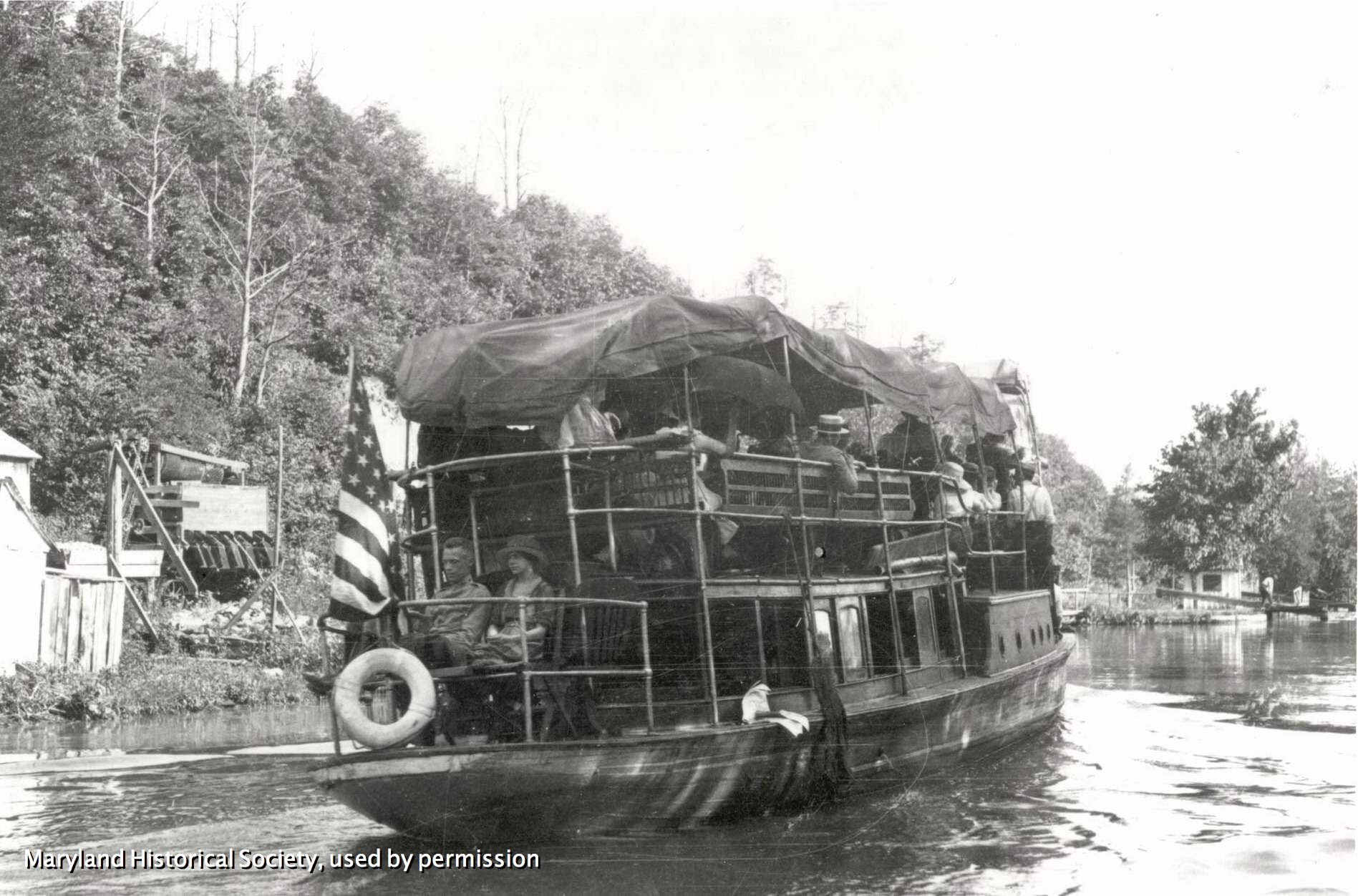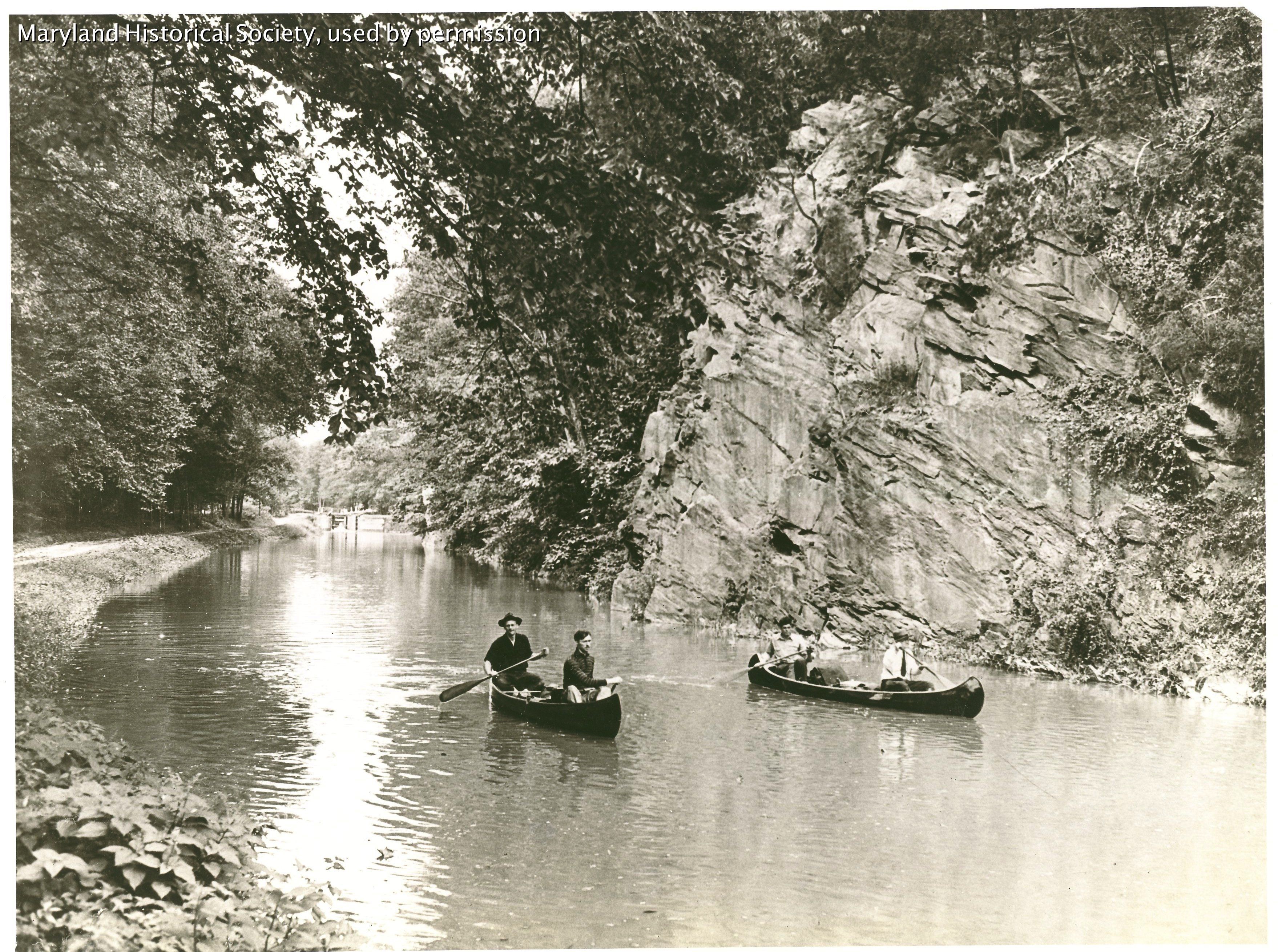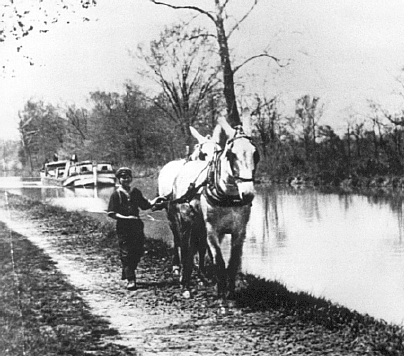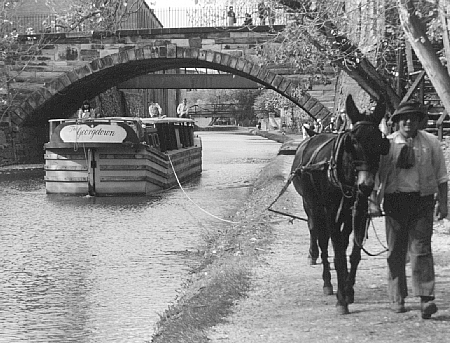About the C&O Canal
Photo © James W. Moore. Used by permission.
In the early 1800s a major constraint on the growth of the nation was the time it took to transport people and goods between the ports of the East Coast and the vast and fertile heartland of the Midwest. The solution lay in canals, which reduced the travel time of an east-west journey to a few days, while significantly increasing the cargo capacity far beyond what was possible with a wagon. On July 4, 1828, President John Quincy Adams broke ground for the Chesapeake and Ohio (C&O) Canal, known at the time as “the Great National Project”. When finished, this thin ribbon of water was to connect the Chesapeake Bay to the Ohio River.
The final section of the Canal opened in 1850, allowing the transportation of coal from Cumberland, MD.
The 1870s were the golden age for the Canal and the Tavern. Between March and December, as many as 700 barges continuously made the five-day journey from Cumberland to Georgetown. Coal was the primary cargo heading eastwards to the tidewater. Rarely was there a cargo to carry on the return westwards.
Prosperity was relatively short lived. The rise of the railroads, and destructive floods, especially in 1889, combined to bring about the gradual demise of the C&O Canal. The Canal ceased commercial operations in 1924, less than 100 years after its energetic beginning.
The C&O Canal Trust's Plan Your Visit tool identifies by keyword and location over 600 points of intererest along the canal.
Historic Photos of the Canal
(courtesy of the Maryland Historical Society)









Resources for Structures of the C&O Canal
The mission of the Friends of Historic Great Falls Tavern extends to all of the structures associated with the C&O Canal. Here are a few resources concerning the structures. Note: Some of these files are large and may take a long time to download.
William E. Davies, The Geology and Engineering Structures of the Chesapeake and OhioCanal: An Engineering Geologist’s Description and Drawings, 1989 draft (Glen Echo,MD: C&O Canal Association, 1999), http://www.candocanal.org/histdocs/Davies-book.pdf. Davies did not complete this book, but the draft is a fine resource. The C&O Canal Association published his draft and makes it available at the URL above. Note: The file is very large and may take several minutes to download.
Steve Dean, a Park volunteer has created two fine presentations regarding the culverts and aqueducts of the C&O Canal. Both are very large and may require several minutes to download:
